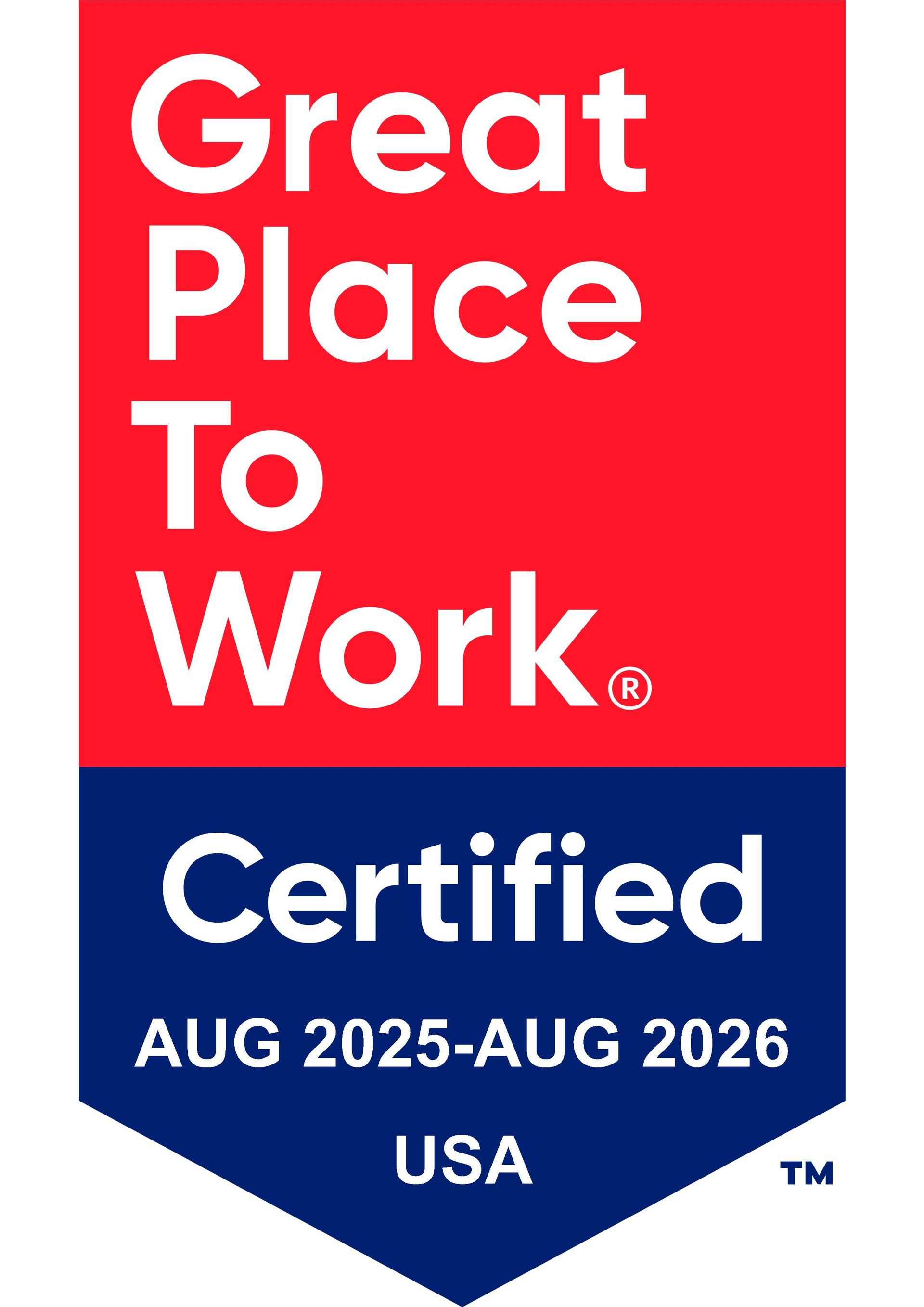
The Importance of Goal Setting for New Hires
15 May 2020
Goal setting is important for employees at any level within an organization, and it is the responsibility of leadership and managers to ensure that they work with employees to set goals on a regular basis. Goals provide the road map of where an employee wants to go in his or her position, which should also align with what are the organization’s expectations of the employee.
Further, goal setting engages employees in their short- and long-term success, as well as the short- and long-term success of the company. Therefore, assuming that the employee is actively achieving goals that align with work expectations, goal setting increases productivity. Goal setting also boosts employee engagement, which ties to employee well-being and morale.
Formal goal setting, such as during the annual performance review process, provides the necessary legal documentation for performance improvement plans and performance-related terminations. Also, referring back to documented goals provides performance markers for managers and employees to discuss, as well as criteria to be met for any bonuses or pay tied to performance.
GOAL SETTING IS CONNECTED TO EMPLOYEE RETENTION AND JOB SATISFACTION
Retention and employee job satisfaction are vital to any organization. Research shows that retention and job satisfaction are tied to employee and career development, advancement opportunities, and promotions, which are all tied to and enhanced by goal setting.
In a LinkedIn survey of recent college grads and students focused on 15 employer value propositions, 28% of respondents ranked development as important, 37% ranked the communication of a career path for growth as important, and 33% ranked being challenged at work as important. In the What the Class of 2018 Wants report by Lasalle Network, 76% of 2019 graduates expect a promotion within one to two years after starting with a company, and for the fourth year in a row, the opportunity for growth was ranked number one when considering a job opportunity.
While employee goal setting is essential for the reasons mentioned above, there are some special considerations when it comes to new hires.
GOAL SETTING FOR NEW HIRES
New hires are already under a fair amount of stress to navigate and assimilate into their new work environment. When managers do not take the time to sit down one-on-one with them to help them set goals and clarify expectations, it can add more stress to their plates.
Further, ambiguity when it comes to new hire job expectations increases the chances that time and energy will be unintentionally wasted. Inefficiency can result when new hires attempt to find a way to succeed on their own, without a clear roadmap on how to get there within an organization.
The following are ways that goal setting can set new hires and companies up for success:
- Clarifying expectations.
- Highlighting what matters to the organization.
- Motivating employees.
- Identifying employee learning and development preferences.
- Providing parameters for a trial or probationary period.
- Gaining insight into what is important to new hires.
CLARIFYING EXPECTATIONS
Goal setting for new hires allows managers to set expectations. If done right, expectations are made crystal clear. Once this clarity is provided, it is easier to build out goals to meet the expectations. It is also necessary that managers support new hires in managing expectations by setting reasonable and attainable goals.
HIGHLIGHTING WHAT MATTERS TO THE ORGANIZATION
Working with new hires to set goals helps them to realize what the priorities are for your organization. It also helps them appreciate what the organization requires of its employees. If a goal you set for a new administrative assistant is to improve client ratings by 5%, for example, the new hire will realize that client ratings are a priority to your team and organization.
KEEPING NEW HIRES MOTIVATED
New hires want to know that they made the right choice by joining your organization. Taking the time to invest in goal setting with new hires helps them feel they are valued and their performance matters.
Goal setting also motivates new hires and keeps them on track for success. Honest feedback will highlight where new hires are performing well and areas upon which they can improve.
IDENTIFYING NEW HIRE PREFERENCES IN LEARNING AND DEVELOPMENT
When managers take the time to sit down with new hires and develop goals, it gives the managers some insight into their learning and development preferences. Does the new hire like hands-on experiences to learn and meet goals, or do they prefer to read a training manual first? Do they prefer to shadow first or hit the ground running? Do they like to take training and development courses in person or online? Is the preference for training to be experienced with a group or solo?
PROVIDING PARAMETERS FOR A TRIAL OR PROBATIONARY PERIOD
It is common for some companies to have a formal trial or probationary period. Whether your organization has a formal or informal process for evaluating a new hire’s performance, goal setting is an essential part of it. Setting goals helps you to determine how well a new hire is doing, assuming that you and the new hire work together to set reasonable goals for the first three to six months of employment.
GAINING INSIGHT INTO WHAT IS IMPORTANT TO NEW HIRES
The goals a new hire sets for themselves gives managers valuable insight into what matters — and what matters most — to the employee. Is taking classes for professional development important? What about connecting with peers and other industry professionals within the organization or networking with the professionals of other organizations? Does the new hire consider it essential to meet regularly with employees from whom they can learn? What about regular meetings with management? How does the new hire prefer to communicate to achieve goals (by email, face-to-face, on the phone, etc.)? Is there a skill they are concerned about acquiring or brushing up on?
By better understanding what is important to new hires, managers can tailor their management style to best offer support and also suggest development opportunities that align with what the employee wants, when available and appropriate. Also, if what is important to the employees appears to be out of alignment with organizational goals and values, a discussion can be held early on to address any potential concerns.
TIPS FOR NEW HIRE GOAL SETTING
Managers and employees often speak about the importance of goal setting, but when it actually comes to doing it, either party can fall short on follow-through and effective collaboration. Below are some tips to support you and your organization when it comes to goal setting for new hires.
HAVE A TWO-WAY CONVERSATION
Goal setting is not just about what your expectations are for the employee. It is also crucial to understand what the employees’ goals are for themselves. A two-way conversation can ensure that the manager and organization are doing what can be done to support the employee, while the employee does what they can do to meet the organization’s expectations. A two-way conversation also lets the employee know that what they have to say matters, increasing job satisfaction.
CREATE AN OPEN-DOOR POLICY
New hires want to feel comfortable going to their managers with any concerns and questions. At the onset of employment for a new hire, it shows great leadership when a manager sits down right away to schedule a time for goal setting. It also lets the employee know that their door is always open.
PROVIDE AN ACCOUNTABILITY BUDDY
Many companies have a formal new hire buddy program, typically for early-career hires, where new hires have access to a work buddy who can support them. Buddies help new hires become familiar with the office, work team, and nuances of the job. An accountability partner, or buddy, can also support a new hire in meeting and achieving work goals.
SET SMART GOALS WITH NEW HIRES
The SMART goal-setting system has been around for decades. Some believe that the SMART system does not work well for long-term goals that might require more flexibility. Still, it allows for a start-to-finish goal-setting approach that is an excellent tool to use with new hires, especially for shorter-term goals.
S = Specific
Goals should be clear, simple, and motivate achievement. Specific goals focus on what one wants to achieve. For example, “I want to increase my sales numbers, so they are higher than they were in Q4.”
M = Measurable
Goals should be measurable and address quantity. You will know that you have met a measurable goal. For example, “I will make my sales numbers 10% higher than they were in Q4.”
A = Attainable
Goals need to be at once achievable, realistic, and challenging. If a new hire sets a goal that is very difficult or nearly impossible to attain, it can lead to frustration, unnecessary stress, and ultimately failure.
R = Relevant
Goals need to be relevant and worthwhile to the organization and the individual. Sales goals for a salesman make total sense. Sales goals for a financial administrative assistant generally will not make sense.
T = Time-bound
For goal setting to be effective, a timeframe or target date for achieving goals needs to be set. In the sales number examples above, increasing sales by 10% over the next two quarters might be a reasonable timeframe.
REWARD EMPLOYEES FOR GOAL ACHIEVEMENT
To support continued motivation to achieve goals, employers can find ways to reward employees for goal achievement. Team lunches to celebrate those who met their goals, gift cards, spot cash awards, and employee swag identified specifically for meeting specific goals are all options. Some organizations choose to put a timeframe around rewards for goals achieved — for example, weekly, monthly, or quarterly rewards.
OFFER ENCOURAGEMENT DURING ROAD BUMPS
If goal setting is working, both new hires and employees, in general, will run into road bumps. Still, managers must continue to show support for and offer guidance to employees whenever appropriate and necessary. For entry-level new hires, it is also critical that managers allow the employees to navigate their way through any perceived obstacles to learn effective problem-solving skills on the job.
PROVIDE REAL-TIME FEEDBACK
Though it is often said that no news is good news, it is best to put employees’ minds at rest. Employees desire regular feedback from their manager; they do not want to wonder whether they are meeting expectations.
If an employee makes a mistake or misses the mark on a goal, it is not beneficial for them to get feedback about the mistake a month or two down the road. Feedback around employee goals should be in real-time, allowing the opportunity for course correction when needed and possible. Feedback about meeting goals and for a job well done should also be conducted in real-time.
MANAGERS ARE RESPONSIBLE FOR NEW HIRE GOAL SETTING
It is up to managers to work with their new hires to ensure they have the tools required for on-the-job success, and goal setting is one tool that should be utilized during a new hire’s first week at work. Goal setting for new hires is vital to their success. And when employees prove to be successful in their jobs, it supports the business’ efforts to positively impact the bottom line, foster internal and external client relationships, and maintain employee morale. Success on the job also often equates to job satisfaction, which supports a company’s retention and recruiting efforts.
GOAL SETTING STRATEGIES WITH KBI BENEFITS
Our team of professional brokers at KBI Benefits is here to help you assess and determine what options are best for your organization. We can help you attract, grow, and keep top talent. Our first step is to optimize current processes to ensure the most efficiency, providing you with the time away from day-to-day administration so you can begin to think strategically.
From there, we can work on creating HR goals which align with the overall organizational goals. Together we will celebrate victories as you enhance HR's credibility and value within your organization.
If you are ready to explore our strategic services, contact us today by submitting our online contact form or calling us at
408.366.8880. We look forward to working with you.




